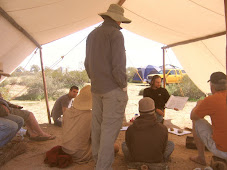Following the realization that food was the major contributing factor in human health and disease, Weston Price kept a keen eye out for what specific foods seemed to keep the primitives in good health. It was already obvious that industrialized foodstuffs weren't supportive of optimal health, so now it was Price's mission to determine what particular “nutritional programs” contributed to the well-being of the primitive groups. What food traditions had thousands of years of trial and error resulted in? Dr. Price noted every culture's dietary habits, including special foods utilized during times of child-rearing for the man and woman. It impressed him that the primitives seemed to be aware of preventative measures beginning with the health of the parents:
A very important phase of my investigations has been the obtaining of information from these various primitive racial groups indicating that they were conscious that [physical degeneration] would occur if the parents were not in excellent condition and nourishment. Indeed, in many groups I found that the girls were not allowed to be married until after they had had a period of special feeding. In some tribes a six month period of special nutrition was required before marriage. (Nutrition & Physical Degeneration, p. 3)
Dr. Price was convinced by the ubiquitous nature of this practice that many ailments of modern civilization were caused by prenatal undernourishment and that many of these problems could be prevented by the proper nutritional reinforcement of the parents to be.
Curious about the nutritional content of the primitive diets – particularly those that were emphasized for child-rearing – he took several samples of foods from each locale in order to test them at his laboratory in the United States. Armed with such information, Dr. Price believed that he could then determine what all the varied diets of each culture had in common and further understand the nutritional wisdom of the primitives. When he analyzed the traditional foods, he was excited to find that, on the whole, foods in the native diets were four times richer in water-soluble vitamins and minerals and ten times richer in fat-soluble vitamins than the industrialized American diet of his day. Of the native foods studied, Price realized that the foods which the primitives most emphasized and often times considered sacred (especially for child-rearing) were rich in “fat-soluble activators:” vitamins A, D, and what he referred to as “activator X” – now understood to be vitamin K2. This included foods such as fish eggs, liver, certain insects, and other cholesterol-rich, fat-rich foods (see table below; foods high in fat-soluble vitamins are in bold).
Curious about the nutritional content of the primitive diets – particularly those that were emphasized for child-rearing – he took several samples of foods from each locale in order to test them at his laboratory in the United States. Armed with such information, Dr. Price believed that he could then determine what all the varied diets of each culture had in common and further understand the nutritional wisdom of the primitives. When he analyzed the traditional foods, he was excited to find that, on the whole, foods in the native diets were four times richer in water-soluble vitamins and minerals and ten times richer in fat-soluble vitamins than the industrialized American diet of his day. Of the native foods studied, Price realized that the foods which the primitives most emphasized and often times considered sacred (especially for child-rearing) were rich in “fat-soluble activators:” vitamins A, D, and what he referred to as “activator X” – now understood to be vitamin K2. This included foods such as fish eggs, liver, certain insects, and other cholesterol-rich, fat-rich foods (see table below; foods high in fat-soluble vitamins are in bold).
The qualities of the foods, Price came to realize through testing native foods as well as conducting experiments in his laboratory, depended greatly on the quality of the soil and the feed given to the animals. For example, grain and hay-fed dairy products in the United States had far less vitamin and mineral content when compared with dairy products from the Swiss in Loetschental Valley, which was produced from cows grazing on “rapidly growing green grass” in the spring and summer and chlorophyll-rich hay in the fall and winter. Price determined that the color of the butterfat from such dairy products could accurately predict the nutrient-density: a deep yellow or orange color reliably indicated high vitamin content. The laboratory tests of traditional foods further bolstered his confidence in the “wisdom of the primitives.”




No comments:
Post a Comment